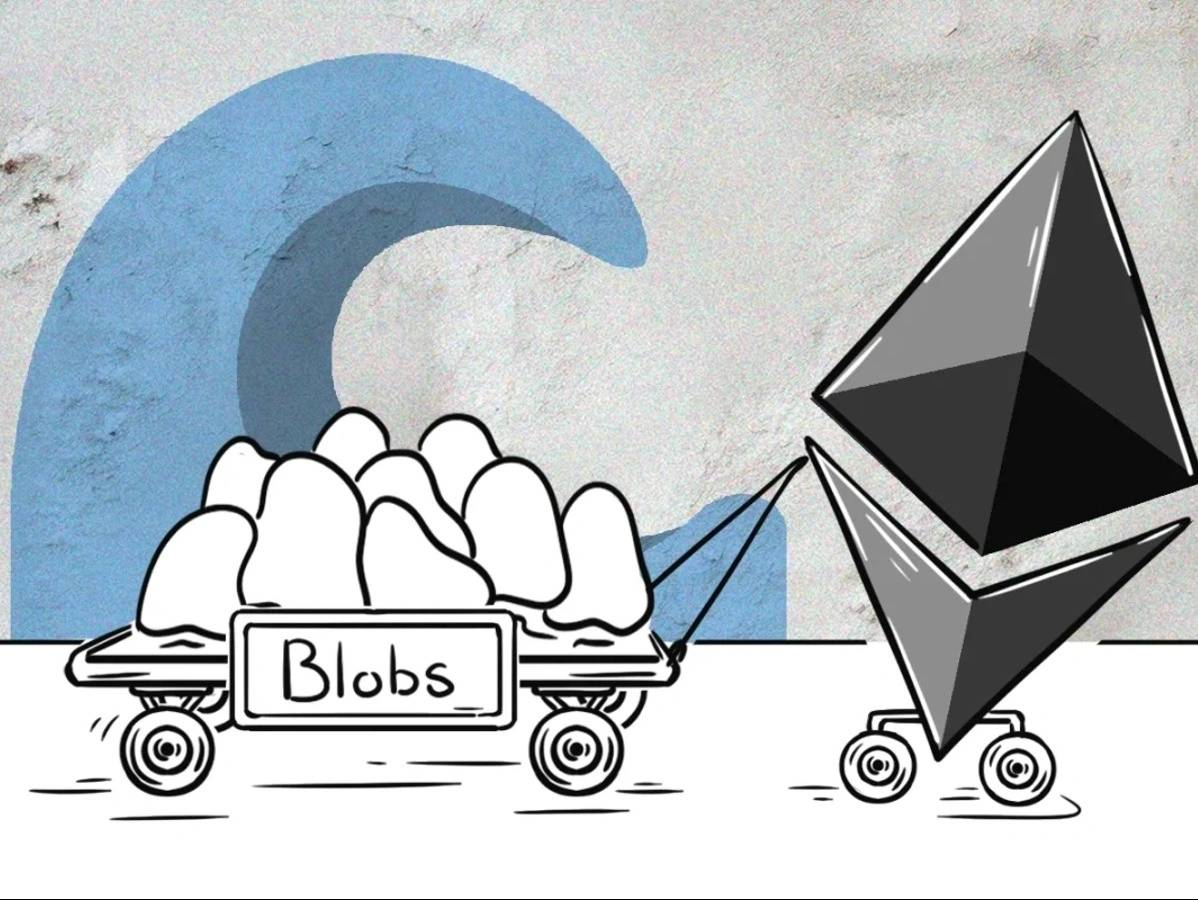위키 구독하기
Share wiki
Bookmark
Blobs
Blobs
**블롭(Blobs)**은 이더리움의 샤딩(sharding) 로드맵의 첫 번째 업그레이드인 프로토-댄크샤딩(EIP-4844)에서 도입된 새로운 개념입니다. 이러한 블롭(blobs)은 트랜잭션과 관련된 데이터를 전달하는 저렴하고 임시적인 메모리 역할을 합니다. 구체적으로, 블롭 전송 트랜잭션과 관련이 있습니다.[1]
개요
확장성은 오랫동안 이더리움 네트워크의 과제였습니다. 네트워크를 더 작은 단위(더 작은 블록체인 역할)로 분할하는 샤딩은 이 문제를 해결하기 위한 목표입니다. 그러나 샤딩은 복잡한 업그레이드를 필요로 하며, 한꺼번에 구현하면 위험이 따릅니다.
주요 이더리움 체인을 자체 미니 블록체인으로 분할하는 대신, 롤업은 이더리움 레이어 1(따라서 레이어 2라는 용어) “위에” 작동하는 미니 블록체인 역할을 합니다.
프로토-댄크샤딩(EIP-4844)의 도입은 네트워크를 완전히 샤딩하지 않고도 블롭(blobs) 개념을 도입하며, 전체 데이터 샤딩이 구현될 때까지의 임시적인 해결책을 제공하여 확장성에 영향을 미칩니다:[6]
- 데이터 저장 작업 감소: 레이어 2 네트워크(예: 옵티미즘)의 대부분의 수수료는 이더리움에 데이터를 저장하는 데 사용됩니다. 블롭(blobs)을 사용하면 이더리움 네트워크에서 이 데이터를 유지 관리하는 데 필요한 노력이 크게 줄어듭니다.[1][3]
- 더 빠른 처리 및 낮은 비용: 블롭(blobs)을 사용하여 이더리움은 더 빠른 트랜잭션 처리 및 더 저렴한 비용을 달성합니다.[1]
- 별도의 수수료 시장: EIP-4844는 레이어 1 실행을 위한 하나와 블롭(blobs)을 위한 또 다른 두 개의 별개의 수수료 시장을 만듭니다. 블롭(blobs)에 대한 수수료는 현재 이더리움 수수료 시장에 맞지 않습니다.[4]
- 혼잡 독립성: 네트워크 혼잡 중에도 블롭(blobs)에 대한 수수료는 영향을 받지 않으므로 피크 시간에도 낮은 수수료를 유지합니다.[5]
블롭(blobs)은 트랜잭션 검증을 더 효율적으로 만들도록 설계되었습니다. 블록의 각 트랜잭션을 검증하는 대신, 네트워크는 블록에 연결된 블롭(blob)이 올바른 데이터를 전달하는지 확인하기만 하면 됩니다. 이러한 블롭 전송 블록의 트랜잭션은 일반적으로 레이어 2 네트워크(예: 옵티미즘)와 관련이 있으며, 보안 보장을 공유하기 위해 이더리움에 데이터를 저장합니다.[1]
블롭(blobs)은 실행 계층(예: geth가 아닌 prysm)이 아닌 비콘 노드에 저장됩니다. 미래의 샤딩 작업은 비콘 노드에 대한 변경만 필요하므로 실행 계층은 다른 이니셔티브를 병렬로 작업할 수 있습니다.
블롭(blob)은 단일 네트워크 업그레이드에서 여러 차원의 문제를 해결하기 때문에 매우 매력적입니다. 이더리움의 확장성을 위한 임시적인 해결책을 제공할 뿐만 아니라 확장성에 대한 전체적인 논지를 뒷받침할 수 있는 상당한 잠재력을 가진 구성을 도입합니다.
EIP-4844(프로토-댄크샤딩)에서 블롭(Blobs)의 개념
이더리움의 EIP-4844(이더리움 덴컨 업그레이드의 핵심 요소)에서 '블롭(blobs)'의 개념은 네트워크 기능을 향상시키기 위해 도입되었습니다.[2]
- 블롭(Blobs): 블롭(blobs)은 이더리움의 블록체인에 통합된 대용량 데이터 패킷으로 데이터 처리 및 저장을 최적화합니다.
- 블롭(Blob) 크기: 각 블롭(blob)은 약 125kB입니다. 이 크기는 표준 이더리움 트랜잭션보다 더 많은 데이터 처리를 허용합니다.
- 저장 방법: KZG 암호[3]그래픽 커밋을 사용하여 블롭(blobs)은 효율적으로 저장[1]되며, 이더리움 네트워크에서 비용 효율적인 데이터 저장 솔루션을 제공합니다.
- 이더리움에서의 역할: 블롭(blobs)은 주로 레이어 2 롤업 솔루션에 유익하며, 트랜잭션 비용을 줄이고 네트워크 부하를 줄여 이더리움의 확장성을 높이는 것을 목표로 합니다. 롤업은 블롭(blobs)을 사용하여 트랜잭션 데이터를 저장할 수 있습니다. 이렇게 하면 이더리움 메인 체인의 공간이 확보되고 롤업은 더 낮은 비용으로 더 많은 트랜잭션을 처리할 수 있습니다. EIP-4844는 블롭(blobs)에 대한 새로운 수수료 시장을 도입합니다.
- EVM 접근성: 블롭(blobs)의 데이터는 이더리움 가상 머신(EVM)에서 직접 액세스할 수 없으므로 이더리움 생태계 내에서 데이터 저장에 특화된 역할을 강조합니다.
잘못된 내용이 있나요?
